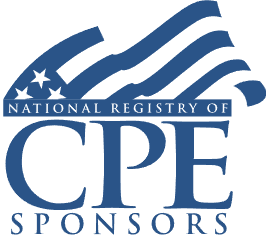Subpart F Income Rules and Sections 956, 958, and 1248: Reporting Challenges of Controlled Foreign Corporations

Course Details
- smart_display Format
On-Demand
- signal_cellular_alt Difficulty Level
Intermediate
- work Practice Area
Tax Preparer
- event Date
Thursday, February 6, 2020
- schedule Time
1:00 p.m. ET./10:00 a.m. PT
- timer Program Length
110 minutes
-
BARBRI is a NASBA CPE sponsor and this 110-minute webinar is accredited for 2.0 CPE credits.
-
BARBRI is an IRS-approved continuing education provider offering certified courses for Enrolled Agents (EA) and Tax Return Preparers (RTRP).
This course will provide professionals with a solid foundation on defining a controlled foreign corporation (CFC) and a "U.S. shareholder," under the rules of Subpart F. The panel will prepare corporate tax managers and advisers to master tax reporting challenges by drilling down into different types of Subpart F income and allowable exclusions, identifying the tax consequences of repatriating a U.S. shareholder-owned foreign corporation's earnings to the United States, and describing "earnings and profits" for these purposes.
Faculty

Mr. Acharya provides tax and accounting services, specializing in international tax and business issues for nearly 3 decades. He advises his clients on cross border tax matters, providing services to multinational clients engaged in US inbound or outbound activities. His services include planning, structuring, consulting, compliance and transfer pricing issues. He has worked extensively in the area of IRS overseas voluntary disclosure initiatives and helped clients comply with international tax requirements. He has a wealth of experience in cross border tax planning and compliance issues related to outbound and inbound US businesses as well as non-resident and expatriate individuals.

Mr. Cathcart specializes in corporate and international tax, in particular cross-border mergers and acquisitions. His primary area of concentration is structuring international corporate and private equity transactions. With more than 40 years of corporate and international tax experience, he previously was a partner in a Washington, D.C. tax boutique law firm, in addition to having more than 20 years of experience with top-tier accounting firms. He previously spent 12 years with KPMG’s M&A Tax practice, where he most recently served as Senior Director. In that role, he was an experienced adviser to the M&A practice in the Western United States.
Description
The primary tax advantage of operating abroad through a foreign corporation is that foreign source income earned by the corporation is generally not taxed by the U.S. until the income is distributed, or made available on a "permanent basis," to the U.S. shareholder(s) or invested in U.S. property. This deferral of U.S. taxation has been allowed from a policy standpoint because it encourages investment in foreign countries so that U.S.-owned businesses can compete in foreign markets.
The objective of Subpart F is to tax U.S. shareholders currently on their pro-rata share of certain types of income earned by a CFC, such as passive income and income earned outside the CFC's country of incorporation in related party transactions. Under IRC Section 956, U.S. shareholders are required to include in gross income their pro-rata share of the CFC's increase in earnings invested in U.S. property made during the year.
To prevent taxpayers from changing the character of income from ordinary to capital gain via a stock sale, IRC 1248 taxes gain on CFC stock as a dividend to the extent of the CFC's allocable earnings and profits.
Listen as our authoritative and experienced panel of international tax practitioners prepares you to master the ins and outs of tax reporting for CFCs. The panel will explain different types of Subpart F income and allowed exclusions, lay out tax ramifications of bringing U.S.-owned earnings from foreign corporations to the United States, and drill down into calculating E&Ps.
Outline
- Identify the definition of a CFC, as well as any associated terms such as "U.S. shareholder"
- Recognize the different types of Subpart F income, as well as allowable exclusions
- Identify the tax consequences of repatriating a U.S. shareholder-owned foreign corporation's earnings to the U.S., and describe E&P for these purposes
Benefits
The panel will analyze and tackle these and other relevant topics:
- Constructive ownership tests in CFCs
- Exclusions from foreign base company income under Subpart F and related regulations
- Treatment of earnings invested in U.S. property
NASBA Details
Learning Objectives
After completing this course, you will be able to:
- Recognize the purpose and calculations of Subpart F
- Identify the characteristics of a CFC
- Define a U.S. shareholder and a foreign corporation
- Apply the constructive ownership tests
- Define foreign base company income and the exclusions
- Identify earnings invested in U.S. property
- Recognize how earnings and profits are calculated
- Distinguish the changes in the character of income from ordinary to capital gain via a stock sale.

Strafford Publications, Inc. is registered with the National Association of State Boards of Accountancy (NASBA) as a sponsor of continuing professional education on the National Registry of CPE Sponsors. State boards of Accountancy have final authority on the acceptance of individual courses for CPE Credits. Complaints regarding registered sponsons may be submitted to NASBA through its website: www.nasbaregistry.org.

Strafford is an IRS-approved continuing education provider offering certified courses for Enrolled Agents (EA) and Tax Return Preparers (RTRP).
Related Courses

Critical Elections for Trust, Gift, and Estate Returns: Forms 1041, 709 and 706; GST, QTIP, 663(b), 645
Tuesday, March 11, 2025
1:00 p.m. ET./10:00 a.m. PT

Family Partnerships: Navigating the Discounting Rules for Family-Controlled Entities
Thursday, March 6, 2025
1:00 p.m. ET./10:00 a.m. PT
Recommended Resources
How CPE Can Bridge the Gap Between What You Know and What You Need to Know
- Career Advancement